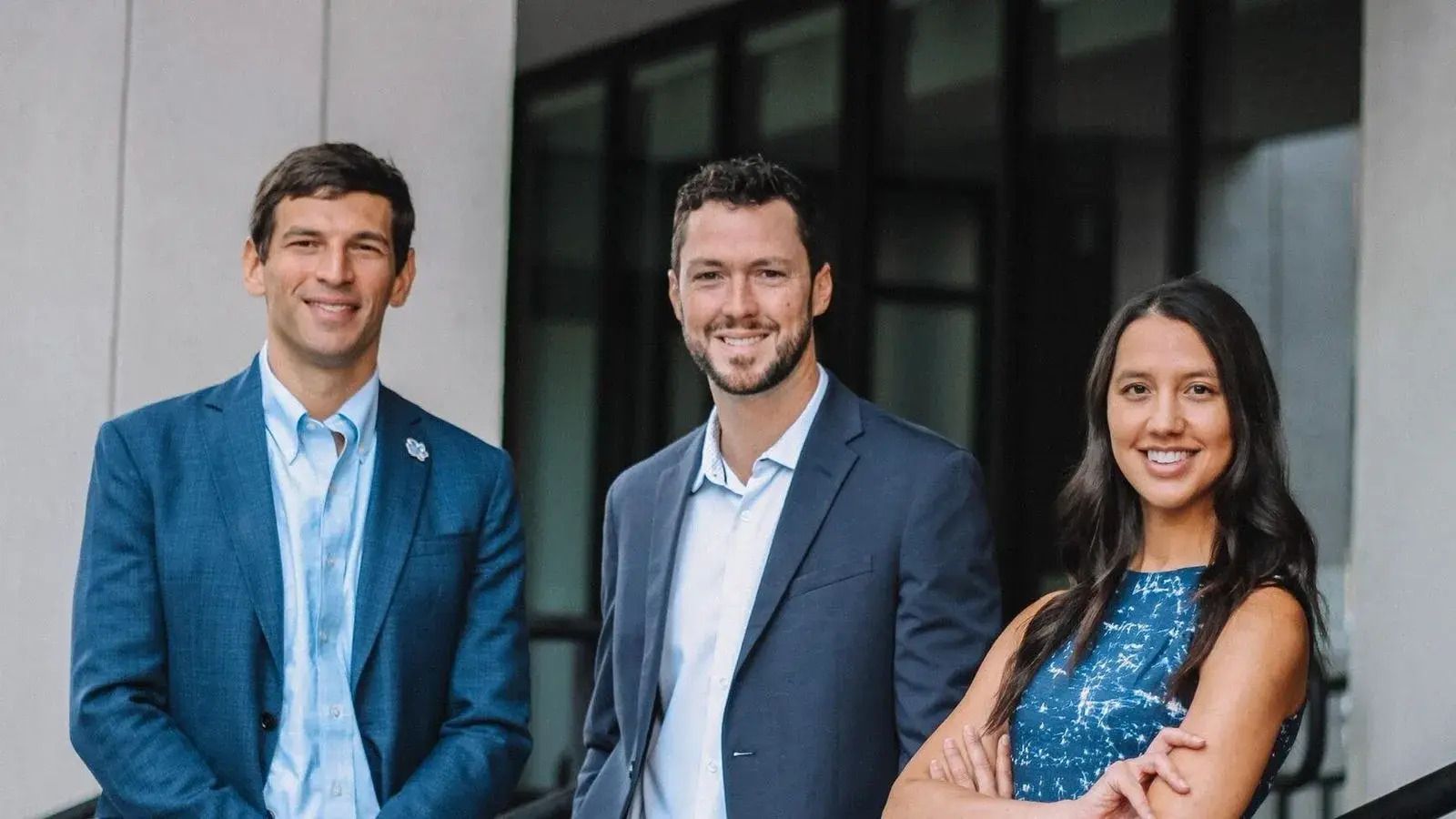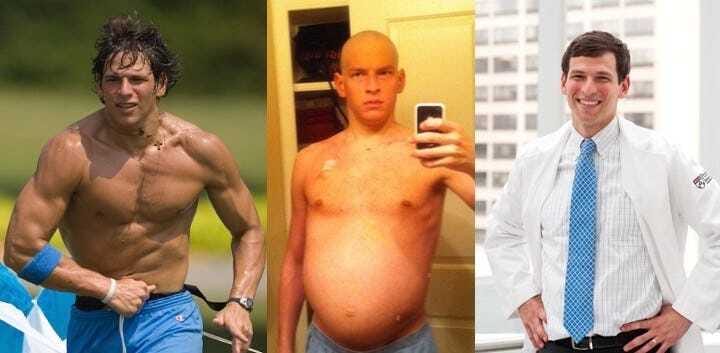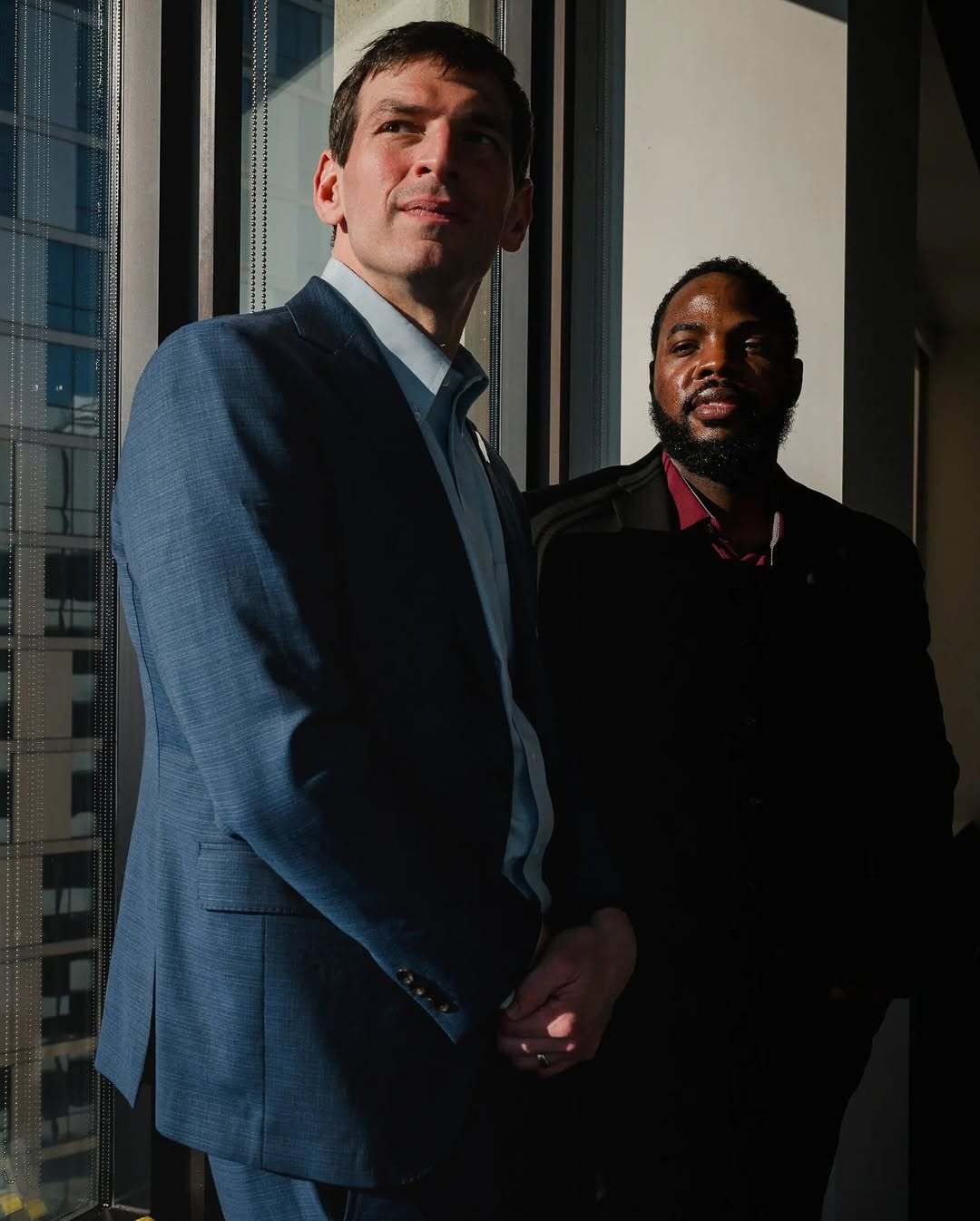- Funs Jacobs
- Posts
- A True Story That Proves AI Is Worth the Hype
A True Story That Proves AI Is Worth the Hype
A doctor once used data and determination to save his own life. Today, his nonprofit uses AI to save others.
From Patient to Pioneer: The True Story Behind Every Cure
Today, we are going to talk about AI. How surprising right?! But, let’s discuss some of the frustration that I sometimes see and hear. We are promised AGI aka Artificial General Intelligence. Sam Altman says it will come sooner than later, Elon Musk says it will happen within the next few years, futurist Ray Kurzweil says human-level AI in 2029 and there are more. Besides the speed of when it will arrive, the impact (according to these experts) will be massive. It will solve every disease on the planet, cure cancer, solve climate change and brings us to a world where everything is free. A true utopia.
But… and this is where, for some, the frustration also comes in.. Although all these experts are predicting these (very hard to grasp) outcomes and changes, how come our social media feeds are just filled with AI generated stuff that really doesn’t matter? Such as viral clips of Sam Altman stealing GPU’s… 😅

Sam Altman caught on CCTV stealing GPUs at Target - AI Generated by Sora 2
I remember giving a talk at the University of Utrecht and one of their professors actually confronting me about it, asking where the “real” impact of AI is. I had multiple examples back then, luckily there is even more now.
So what about all the big promises? Well there is more amazing news besides new GPT models and crazy AI generated videos and images! When we discussed the Google AI empire deep dive we already saw that Google DeepMind is truly changing the landscape of multiple critical industries, such as the healthcare and energy sectors.
I think part of the reason we are not hearing more of this, has to do with the social algorithms that are optimized for engagement. And guess which emotions results in stonger, better engagement? Negativity, not positivity. But ok, I am not going to rant about horrible algorithms again. I want to help change it by spreading the word about some of the amazing things AI is already doing for us, in industries that really matter. Today we are going to talk about such an example.
Let me introduce you to: Ever Cure.
Every Cure is a nonprofit founded by Dr. David Fajgenbaum, Dr. Grant Mitchell and Tracey Sikora with one big goal: to unlock the full potential of existing medicines. Instead of waiting decades for new drugs, they use AI to uncover treatments hiding in plain sight, sometimes inside medicines we already have.
But before we talk about how they’re doing it, let’s start with why. Because this story began long before the algorithms.. but with a young doctor who almost didn’t make it.

Every Cure Co-Founders Dr. David Fajgenbaum, Dr. Grant Mitchell and Tracey Sikora received 48 Million USD in funding from a U.S. health agency in 2024.
The Doctor Who Saved His Own Life
Dr. David Fajgenbaum was 25 years old, studying medicine at the University of Pennsylvania, when his body suddenly started to fail him. It began with fatigue, then swelling, and within weeks his organs began shutting down. Liver, kidneys, bone marrow — all collapsing at once. He went from helping patients one day to becoming one himself the next.
Six months in the intensive care unit followed. He nearly died three times. Doctors had no clear diagnosis, no treatment, and no answers. In his words, he realized what he later called the Santa Claus theory of medicine: the naïve belief that somewhere, out there, a team of scientists is working on every disease. But when he looked around, he saw that wasn’t true, not for him, and not for the 14,000 diseases that still have no approved treatment.
Most people would have given up. David didn’t.
He left the hospital determined to change the system. He began collecting and storing his own blood samples, every few weeks, hoping that if his disease returned, he could analyze what was happening inside his body. When it did come back, he used those samples to run advanced blood analyses — what we now call proteomic profiling — and found something remarkable.
His immune system’s communication network, known as mTOR, was stuck in overdrive. That discovery connected his condition to a drug originally developed for kidney transplant patient called sirolimus. He asked his doctors to try it. It wasn’t made for his disease. It wasn’t officially approved. But it targeted the same biological pathway.
That was 11 years ago. He’s been in remission ever since.
This wasn’t luck or magic. It was science, data, and hope — powered by a willingness to look beyond the rules. And it sparked a new question that would define his life’s work:
If one existing drug could save his life, how many others could save someone else’s?

Dr. David Fajgenbaum from college athlete (left), to nearly dying three times (middle), to now (right).
From Miracle to Mission — The Birth of Every Cure
That question became the foundation for Every Cure, the nonprofit David co-founded with Dr. Grant Mitchell. Their mission is simple but massive: use artificial intelligence to uncover new uses for existing medicines and in doing so, accelerate treatments for every disease on Earth.
It sounds almost impossible until you see the numbers. There are over 18,000 known human diseases. About 14,000 of them have no approved treatment. Yet we already have more than 4,000 FDA-approved drugs. Each one of those drugs interacts with the human body in thousands of ways — ways we don’t fully understand.
Every Cure’s AI systems scan medical literature, patient data, and molecular interactions to find hidden connections between those drugs and untreated conditions. It’s a kind of digital detective work — pattern recognition at a global scale.
Instead of waiting 10–15 years and spending billions to develop a single new medicine, AI can reveal that the cure might already exist — it’s just sitting in another database, filed under a different name. That’s exactly what happened with sirolimus. And it’s what could happen thousands of times more.
How Every Cure Actually Uses AI
For decades, the process of discovering new drugs has looked roughly the same: start with a hypothesis, test it in the lab, run animal studies, then move to human trials. It’s slow, expensive, and uncertain. On average, it takes 10 to 15 years and billions of dollars to develop a single new drug and 90% of them fail before reaching the market.
But here’s the crazy part: at the same time, there are already 4,000+ approved medicines sitting on shelves, each interacting with the human body in complex ways we don’t fully understand. Inside those interactions are clues, maybe even cures, for other diseases. The problem? No human could ever analyze the trillions of possible combinations hiding in that data.
Well, you guessed it, this is exactly what AI is good at!
Every Cure’s team built an AI platform called The Matrix. It quantifies the likelihood of every FDA-approved drug treating every known human disease. In total, that’s more than 75 million possible combinations. The Matrix ingests vast amounts of biomedical information such as clinical trial results, scientific papers, molecular data, and patient outcomes, then searches for hidden relationships.
It looks for moments when two diseases affect the same biological pathway, when a drug developed for one condition shows unexpected benefits in another, or when scattered case reports quietly hint at something bigger.
Before AI, this kind of cross-disease analysis was almost impossible. It would have taken thousands of scientists reading millions of papers manually, a task so enormous it could never realistically be done. Now, AI can process that information in days.
The real power, however, is not just speed, it’s context. The system ranks the most promising drug and disease matches and hands them to medical researchers for review. That means science no longer starts from zero. It starts from a data-driven shortlist of real possibilities.
And that is what makes Every Cure special. It’s not using AI to replace discovery, it’s using AI to reveal it. Humans still make the call, but now with an AI-powered compass pointing to where the next breakthrough might be hiding.
Real World Impact
One of the first patients they helped after David’s recovery was Kaila, a young girl in Chicago who was dying from Castleman disease. Nothing was working, until they tried a different existing drug their analysis had surfaced. It worked. Seeing Kaila recover became the moment David realized this wasn’t just about his life anymore, it was proof that AI-driven repurposing could save many more.
Not long after, the team identified another repurposed drug for a patient with a rare and aggressive cancer called angiosarcoma. That treatment, too, showed unexpected promise. It became a second proof point that the same process which saved David and Kaila could uncover new hope for completely different diseases.
As their AI systems grew more powerful, they began surfacing potential matches no one would have thought to test, like lidocaine, the numbing agent used every day at the dentist’s office, scoring unusually high as a possible therapy for breast cancer. The data suggested lidocaine might actually help kill cancer cells and could even reduce recurrence if injected around tumors before surgery. A simple, inexpensive, well-known drug, reimagined through data.
Each of these examples captures what makes Every Cure extraordinary: the possibility that somewhere in the 4,000 medicines we already have, countless other cures are quietly waiting to be found and AI is finally showing us where to look.
What makes this even more powerful is that humans remain at the center of it all. Every Cure’s tech team includes doctors and scientists who work side by side with engineers to interpret what the AI finds. The algorithms surface possibilities, but it’s people who decide which ones truly matter. In David’s words, it’s “AI pointing us to possibilities, but humans deciding what helps people.” It’s a partnership, not a replacement. Proof that the best breakthroughs still happen when data and human judgment work together.
Closing Thoughts
I genuinely believe AI has the potential to bring us closer to a utopian world. Not a perfect one, there will always be challenges, just different ones, but one that is a net positive for humanity. The implications go far beyond automating marketing tasks or generating funny memes and videos. I just hope people don’t forget that.
It’s easy to dismiss AI as a bubble, to say it’s all hype or fake promises, or to question why people and companies are spending billions on compute and energy for something that might not even happen. But what if it does? What if we actually get there?
Innovation has always been driven by people who were just crazy enough to try something that had never been done before, people willing to pour their time, energy, and money into a promise. And even if this turns out to be a “bubble,” I still have enormous respect for what’s being built. Because even if we never reach AGI, even if what we have now is “all we get,” it’s still transforming everything around us. It’s still changing, and saving, lives.
Just look at Every Cure to see the proof of that. AI is already having real-world, real-life impact.
So yes, all of this chaos, hype, and experimentation is worth it if you ask me. If this story resonates with you, help me spread a bit of that positivity. The more people understand the good that’s being built, the more we’ll all push toward a future that’s truly worth the effort.
Positivity might spread slower than fear, but it builds stronger foundations.
Much love,
Funs
PS... If you’re enjoying my articles, will you take 6 seconds and refer this to a friend? It goes a long way in helping me grow the newsletter (and help more people understand our current technology shift). Much appreciated!
PS 2... and if you are really loving it and want to buy me some coffee to support. Feel free! 😉
Thank you for reading and until next time!

Who am I and why you should be here:
Over the years, I’ve navigated industries like advertising, music, sports, and gaming, always chasing what’s next and figuring out how to make it work for brands, businesses, and myself. From strategizing for global companies to experimenting with the latest tech, I’ve been on a constant journey of learning and sharing.
This newsletter is where I’ll bring all of that together—my raw thoughts, ideas, and emotions about AI, blockchain, gaming, Gen Z & Alpha, and life in general. No perfection, just me being as real as it gets.
Every week (or whenever inspiration hits), I’ll share what’s on my mind: whether it’s deep dives into tech, rants about the state of the world, or random experiments that I got myself into. The goal? To keep it valuable, human, and worth your time.

Reply